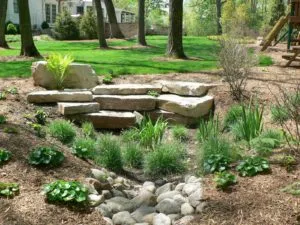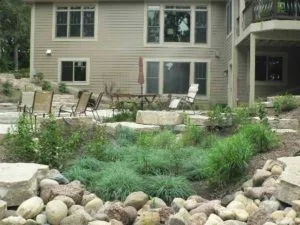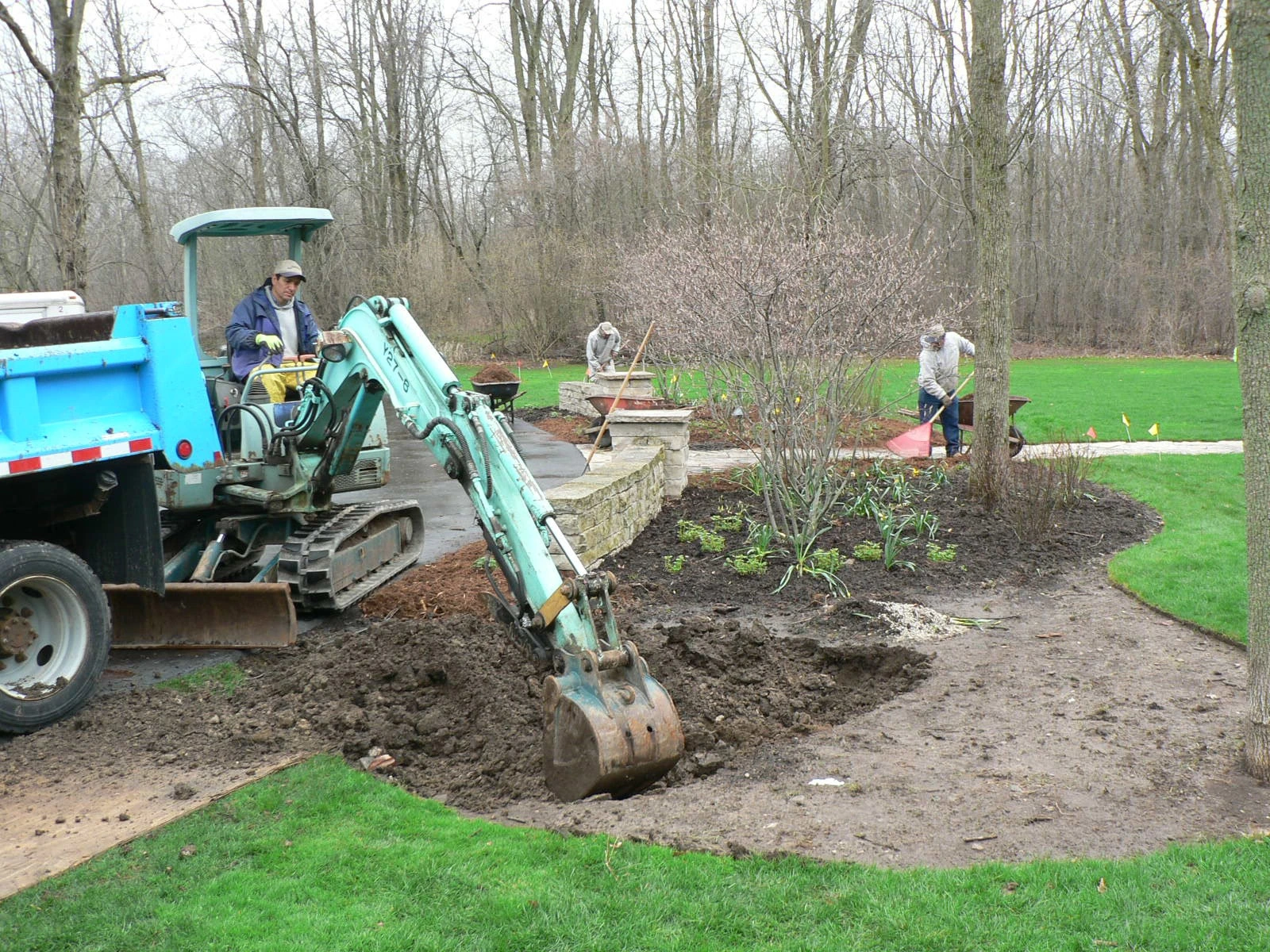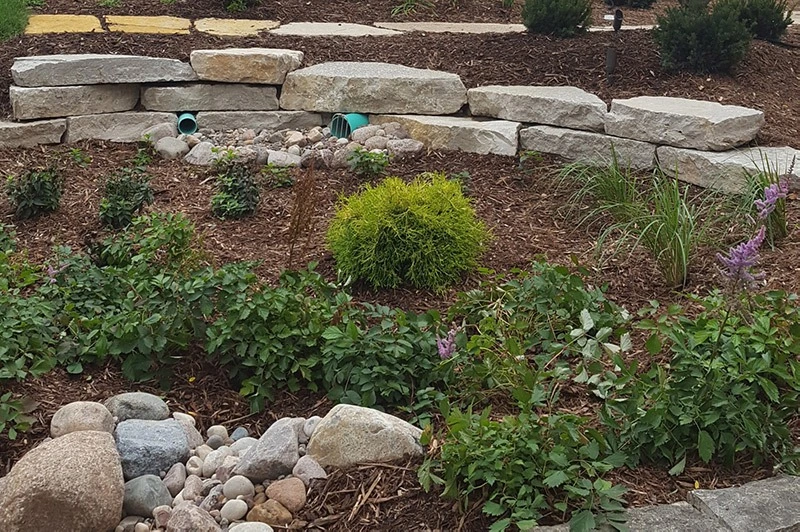Rain gardens are an excellent way to bring beauty and sustainability to your landscape. We know that rain gardens are trendy and good for the environment and our community, but what exactly is a rain garden, what are the benefits of a rain garden, and what can it do for you? Read below to learn more about rain garden benefits and how you can incorporate them into your landscape.
What Is A Rain Garden?
 A rain garden is a decorative garden used to collect water from storm runoff and other impervious surfaces, such as roofs. Rain gardens are designed to absorb and retain water, which helps prevent polluted water from running into local waterways. When designed properly, they can add a real visual boost to your landscape.
A rain garden is a decorative garden used to collect water from storm runoff and other impervious surfaces, such as roofs. Rain gardens are designed to absorb and retain water, which helps prevent polluted water from running into local waterways. When designed properly, they can add a real visual boost to your landscape.
The Benefits Of A Rain Garden
Improves Water Drainage
First on our list of rain garden benefits is that they improve water drainage. Rain gardens can soak up to 30% more water than the standard lawn. This can be a huge benefit if you normally struggle with muddy patches or parts of the garden that don’t drain very well.
Prevents Stormwater Runoff
 Rain gardens are also beneficial to the environment in several ways. For example, they help to prevent polluted water from running into waterways and causing harm to wildlife. In addition, rain gardens can reduce stormwater runoff by as much as 50%, which significantly impacts reducing flooding, maintaining healthy water quality, and preventing erosion.
Rain gardens are also beneficial to the environment in several ways. For example, they help to prevent polluted water from running into waterways and causing harm to wildlife. In addition, rain gardens can reduce stormwater runoff by as much as 50%, which significantly impacts reducing flooding, maintaining healthy water quality, and preventing erosion.
Low Maintenance
Last on our list of rain garden benefits is that they are low maintenance. Because of the way rain gardens are made, you won’t need to ever mow it, and you probably won’t need to water it either. You’ll still need to do the occasional weeding and mulch session, but other than that, you can almost set and forget it!
How Do I Incorporate A Rain Garden?
The easiest way to incorporate a rain garden into your landscape design is by creating one in your yard. To do this, you’ll need to find an area of land that gets plenty of sunlight and dig out the soil. Once that’s done, place three inches of gravel on top of the dirt. Next up: choose some plants for your rain garden! You can pick any type of greenery you want (we recommend native plants).
Once all those elements are in place, you’re ready to plant! The next steps will depend on how big or small your space is and how much water drainage you need. If it’s small enough, simply fill up the hole with soil until it covers all but one inch at the bottom (this will ensure good drainage). For bigger spaces or areas with excess water buildup after rainfall events—i.e., areas prone to flooding—dig out even more dirt so there’s room for larger rocks and other objects that will help keep unwanted moisture away from seeping into nearby homes or structures.

Best Rain Garden Plants For Wisconsin Landscapes
When creating a rain garden in Wisconsin, it is essential to choose plants that are native to the region and can thrive in the local climate and soil conditions. Native plants are well adapted to the environment and provide numerous benefits to the ecosystem. Here are some of the best plants for a rain garden in Wisconsin:
- Joe Pye Weed
- Swamp Milkweed
- Cardinal Flower
- Culver’s Root
- Blue Flag Iris
- Great Blue Lobelia
- New England Aster
- Sneezeweed
- Prairie Blazing Star
- Blue Vervain
End Note:
A rain garden can be a beautiful addition to your landscape design, but more importantly, it helps reduce the amount of polluted water that runs into our waterways. Before you consider adding one to your landscape, reach out to the team at Landcrafters; we’d be happy to help!


